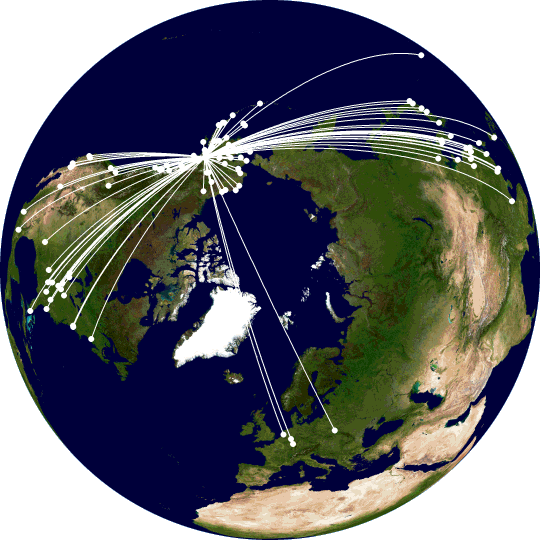Anchorage is uniquely positioned almost equidistant from major cities in North America, Europe, and Asia, making it a natural intersection point for global air freight. This strategic location not only facilitates efficient logistics but also enhances the speed and reliability of cargo transport across continents.
The Role of Anchorage in Global Supply Chains
From medical supplies to electronics, Anchorage plays a vital behind-the-scenes role in ensuring fast, reliable delivery across continents. The airport serves as a key transit point for essential goods, particularly in times of crisis, such as during the COVID-19 pandemic when the demand for medical supplies surged. Anchorage’s logistical capabilities allowed for the rapid distribution of vaccines and other critical supplies, highlighting its importance in global health and safety.
24/7 Operations
ANC operates around the clock with no curfews, enabling continuous cargo movement and accommodating the varying schedules of international freight carriers.
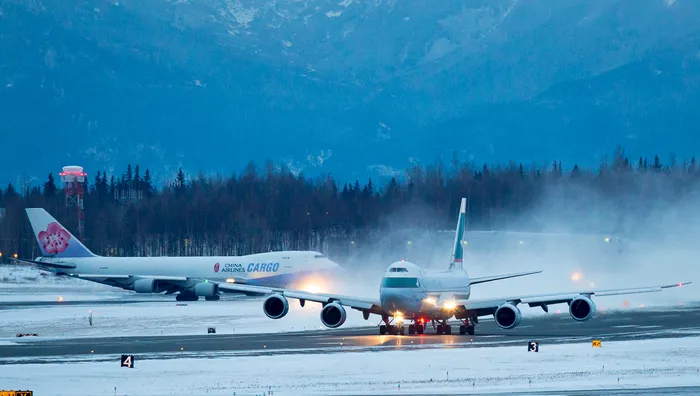
Anchorage Airport Stats
Ted Stevens – Anchorage International is one of our planet’s most important cargo hubs. A few stats from the Alaska Department of Transportation:
- Anchorage is less than 9.5 hours from 90% of the industrial world
- #2 in the US for landed weight of cargo aircraft
- 4th busiest airport in the world for cargo throughput
Data provided by FlightRadar24 shows over 8300 cargo flights arriving and departing Anchorage International in May 2023. Cargo flights departed to or arrived from 103 different locations during the time period.
The number of cargo airlines stopping in Anchorage is impressive (not an exhaustive list):
| Air China (Beijing) | FedEx |
| Asiana | Kalitta Air |
| Atlas | Korean Air |
| Cargolux | NCA (Nippon Cargo) |
| Cathay Pacific | Polar Air Cargo |
| China Airlines (Taipei) | Singapore Cargo |
| China Cargo (Shanghai) | Suparna (Shanghai) |
| China Southern | UPS |
| EVA Air | Western Global |
The above list doesn’t include local cargo airlines like Northern Air Cargo, Lynden, ACE, Everts, and others. These carriers provide vital service to remote Alaska communities.
The Boeing 747: The Cargo Giant Powering Anchorage’s Global Reach
The Boeing 747, often called the “Queen of the Skies,” is one of the most iconic aircraft in aviation history — and at Ted Stevens Anchorage International Airport (ANC), it plays a central role in global cargo logistics. With its massive payload capacity, intercontinental range, and robust design, the 747 is a cornerstone of the air freight operations that have made Anchorage a strategic cargo hub.
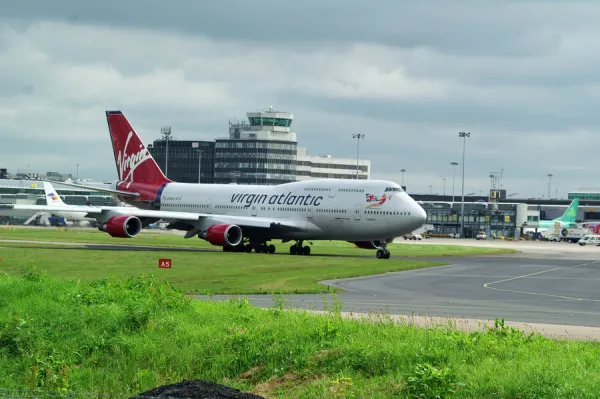
Cargo Hub:
Why the 747 Dominates in Anchorage
Anchorage’s geographic position — nearly equidistant between Asia and North America — makes it an ideal technical stop for large cargo aircraft. Among all, the Boeing 747-400F and 747-8F models are most commonly seen on the tarmac at ANC. These aircraft frequently land for refueling and crew swaps, taking full advantage of the airport’s 24/7 operations, low congestion, and runways built for heavyweights.

Anchorage & Passenger Airlines
From the 1940s until early 1990s, passenger airlines used Anchorage as a “technical (tech) stop” (fuel and crew change) for routes between North America, Europe, and Asia.
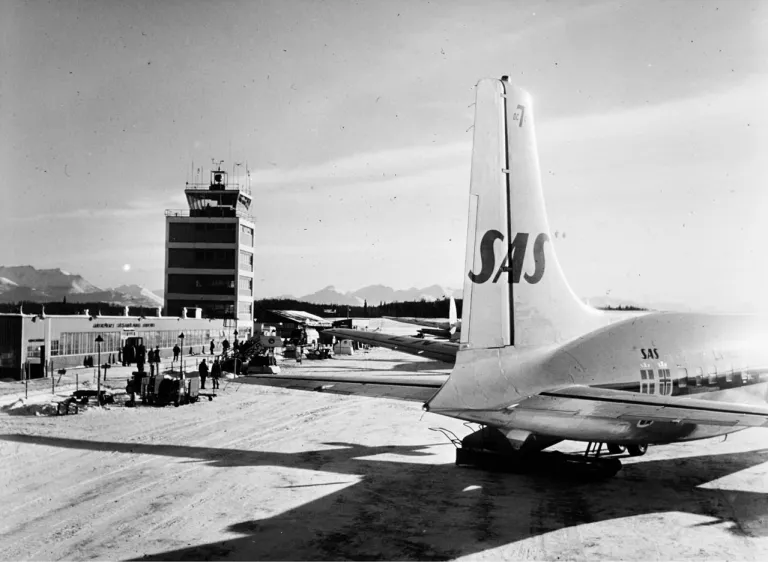 In 1957, Scandinavian Airlines (SAS) began service between Copenhagen and Tokyo, using Anchorage as a tech stop. Photo: SAS Douglas DC-7 in Anchorage.
In 1957, Scandinavian Airlines (SAS) began service between Copenhagen and Tokyo, using Anchorage as a tech stop. Photo: SAS Douglas DC-7 in Anchorage.
There are more direct routes between Europe and Asia, but at the time, Soviet and Chinese airspace was unavailable for most carriers. Airlines flew a polar route from Europe to Anchorage before continuing to Tokyo.
In the 1990s, passenger airlines were able to skip the Anchorage stop thanks to new long range aircraft and changing geopolitical climate. As Anchorage passenger traffic declined, cargo traffic exploded.
- Safety and security concerns: Unruly passengers, bomb threats, etc.
Location
Anchorage sits on the northern side of the planet, making it a natural point for routes entering and exiting the Pacific. It’s also closer to many East Coast destinations in Asia than other locations.
Anchorage Weather
Geographically, Anchorage is the perfect location for a trans-Pacific pit stop. But the weather is all over the map.
Beautiful Weather
Late spring and summer provide heavenly weather and excellent flying conditions in Alaska. If you visit on a land or cruise vacation, you’ll fall in love with the foliage and wildlife. Alaska’s fresh produce is second to none. Long, sunny days and highs in the mid-sixties (°F) grow amazing fruits and vegetables. I love long layovers in Anchorage during the summer.
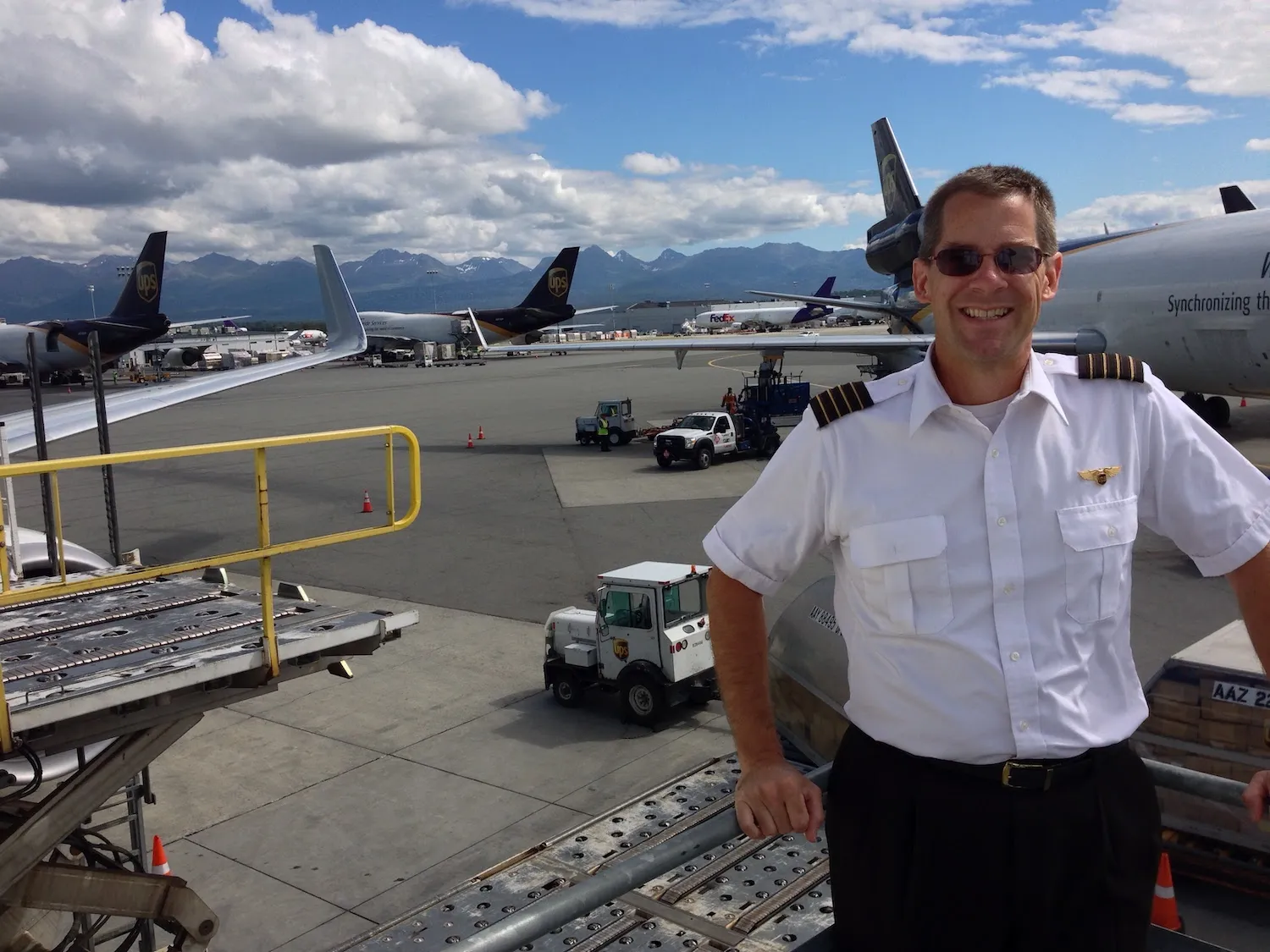 The Alaska aviation community comes to life in the spring. It’s a plane spotter’s dream. But, enough about Alaska’s four months of good weather…
The Alaska aviation community comes to life in the spring. It’s a plane spotter’s dream. But, enough about Alaska’s four months of good weather…
Challenging Weather
Anchorage weather provides special challenges for aircraft operators. Thanks to the North Pacific and Alaska Coastal currents, Anchorage has relatively mild winters compared to the state’s interior. But it can still get quite cold and very snowy.
From the years 2000-2022, Anchorage’s average snowfall was about 74 inches/year. All that snow keeps aircraft deicing crews busy from October to May. The following video was shot in November, 2022 during a moderate snowfall event. Warmly dressed crews in four deicing trucks apply Type-4 fluid to the wings and tail surfaces of a UPS Boeing 747-8F. On this particular day, the pilots had about 50 minutes after deicing to takeoff before the deicing fluid holdover time expired.
A UPS 747 being deiced during moderate snowfall in Anchorage.
The Alaska Department of Transportation does an amazing job keeping the airport open in the worst winter weather. Snow removal teams perform a well rehearsed ballet to clear a snow covered runway in a matter of minutes. Crews alternate between the two parallel runways so aircraft can continue to arrive and depart. Anchorage International is always open.

Lake Hood – World’s Busiest Seaplane Base
Adjacent to Anchorage International is Lake Hood, home to nearly 800 seaplanes and wheeled aircraft.
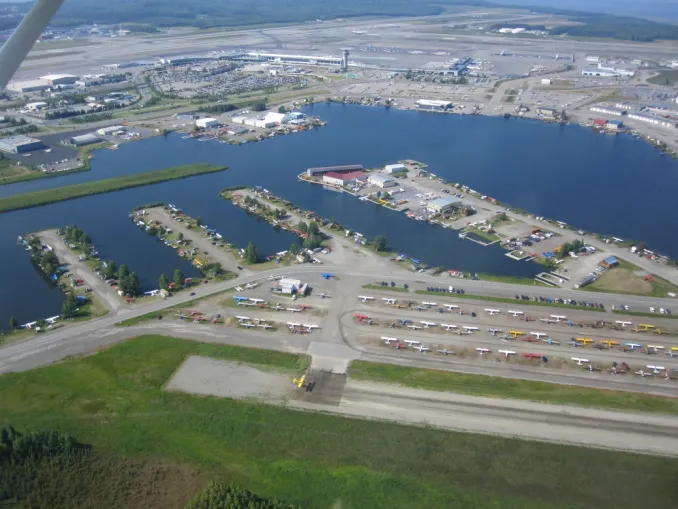
Lake Hood has three landing areas (water runways) for seaplanes and one gravel runway for wheeled aircraft. During the winter months, the frozen lake is maintained for aircraft with skis.
The seaplane base averages 190 flights a day. It’s great fun to watch the seaplanes. If you visit in the summer, rent a bicycle for a leisurely ride around the base.

Lake Hood airport diagram depicting three water landing areas


